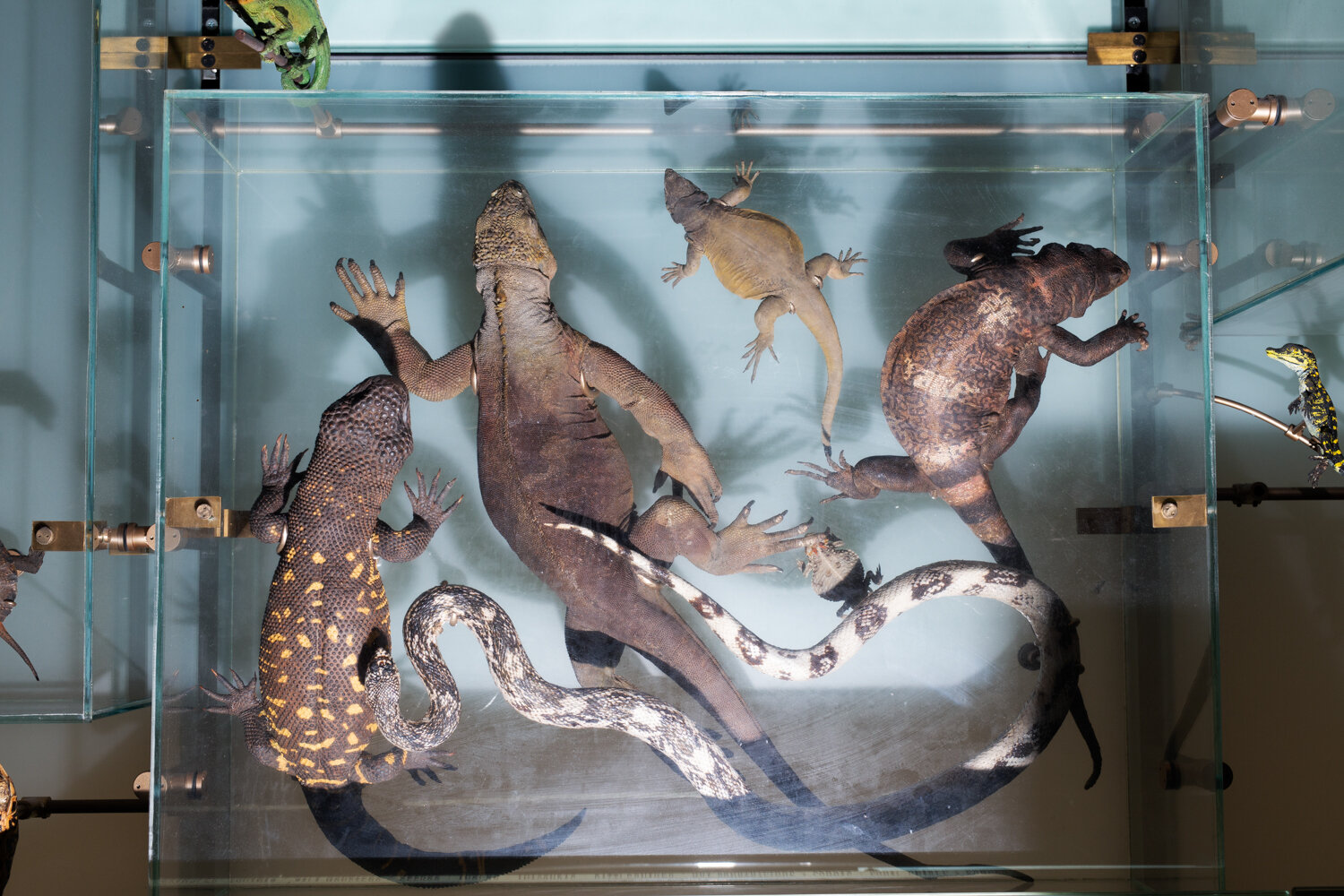

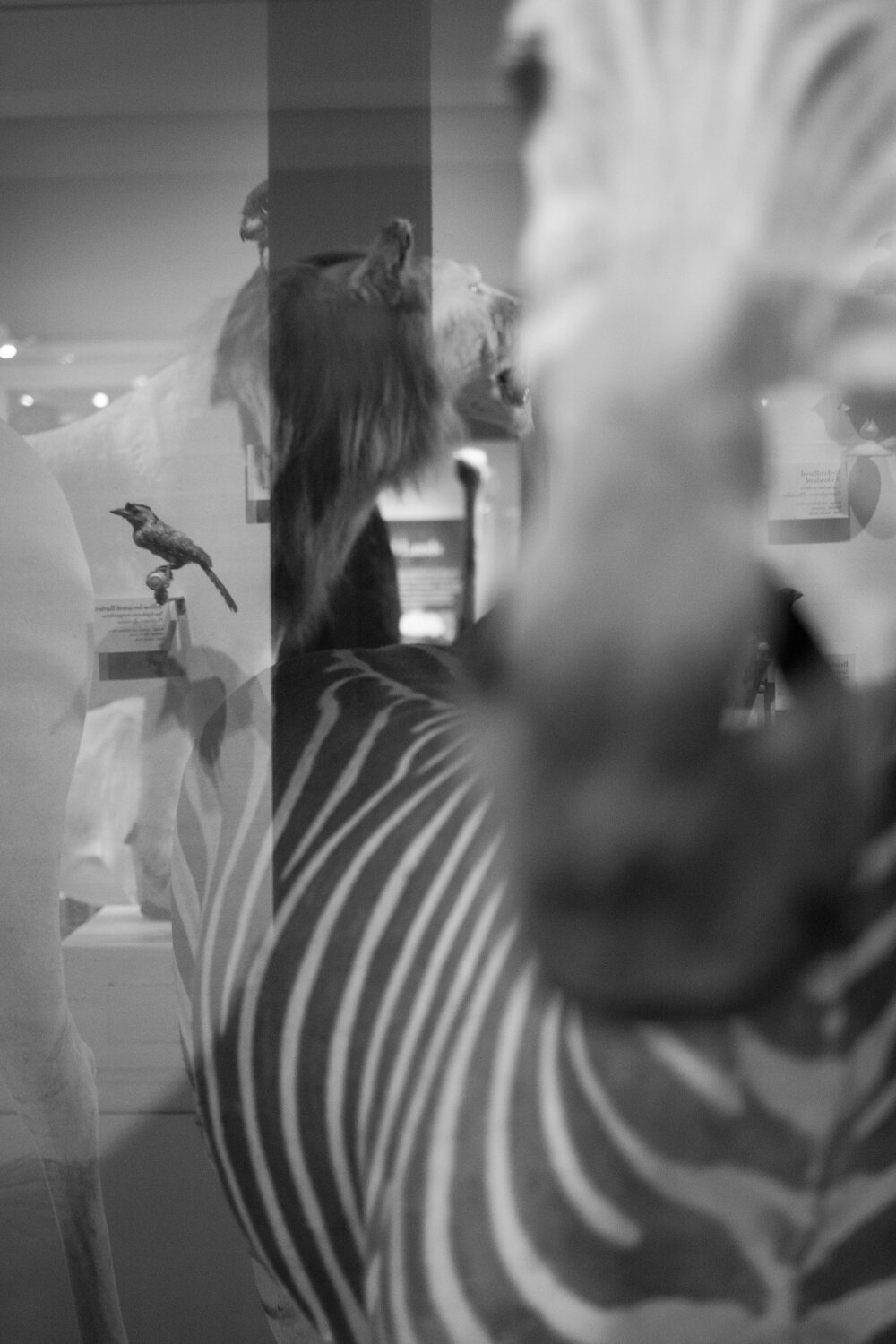
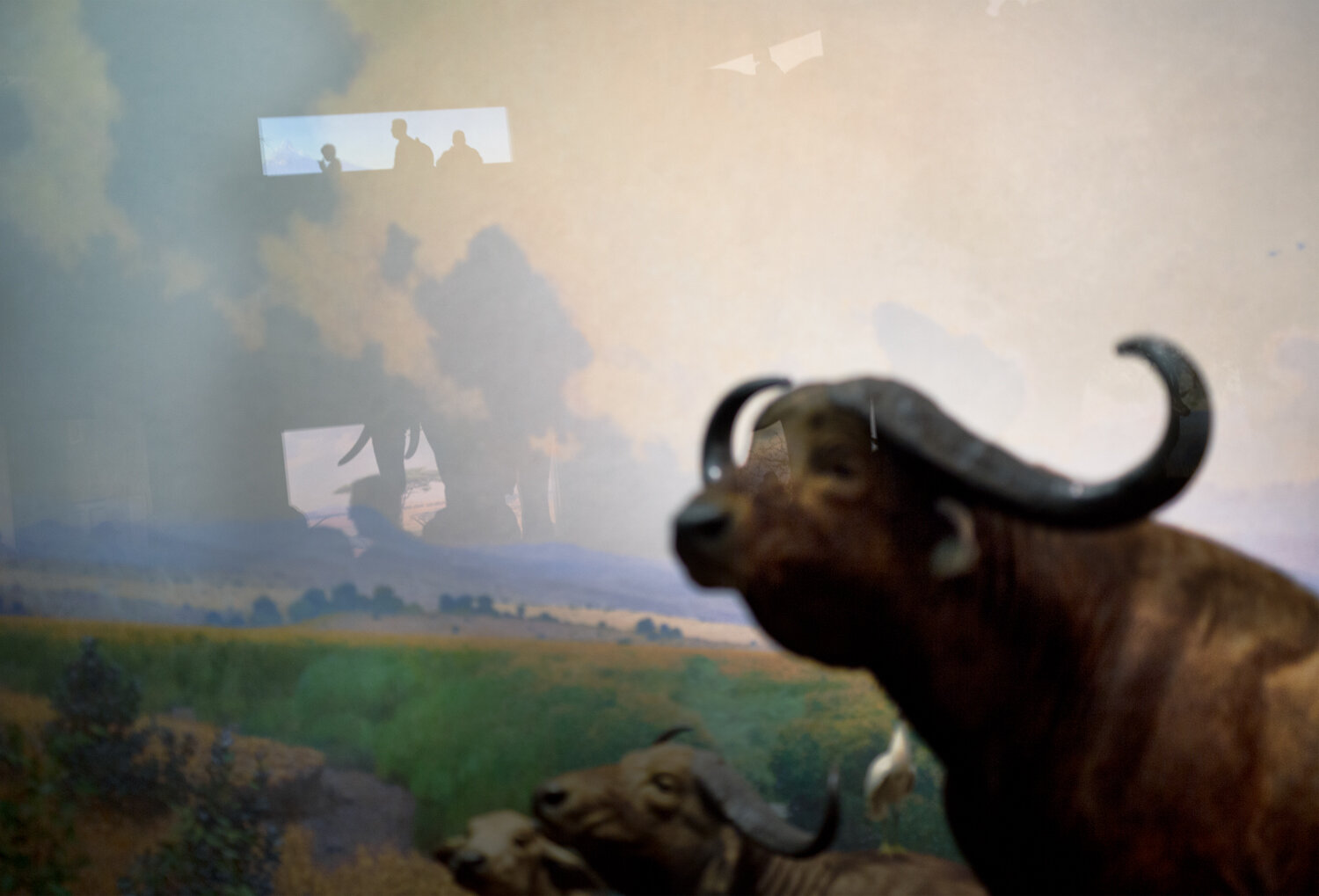
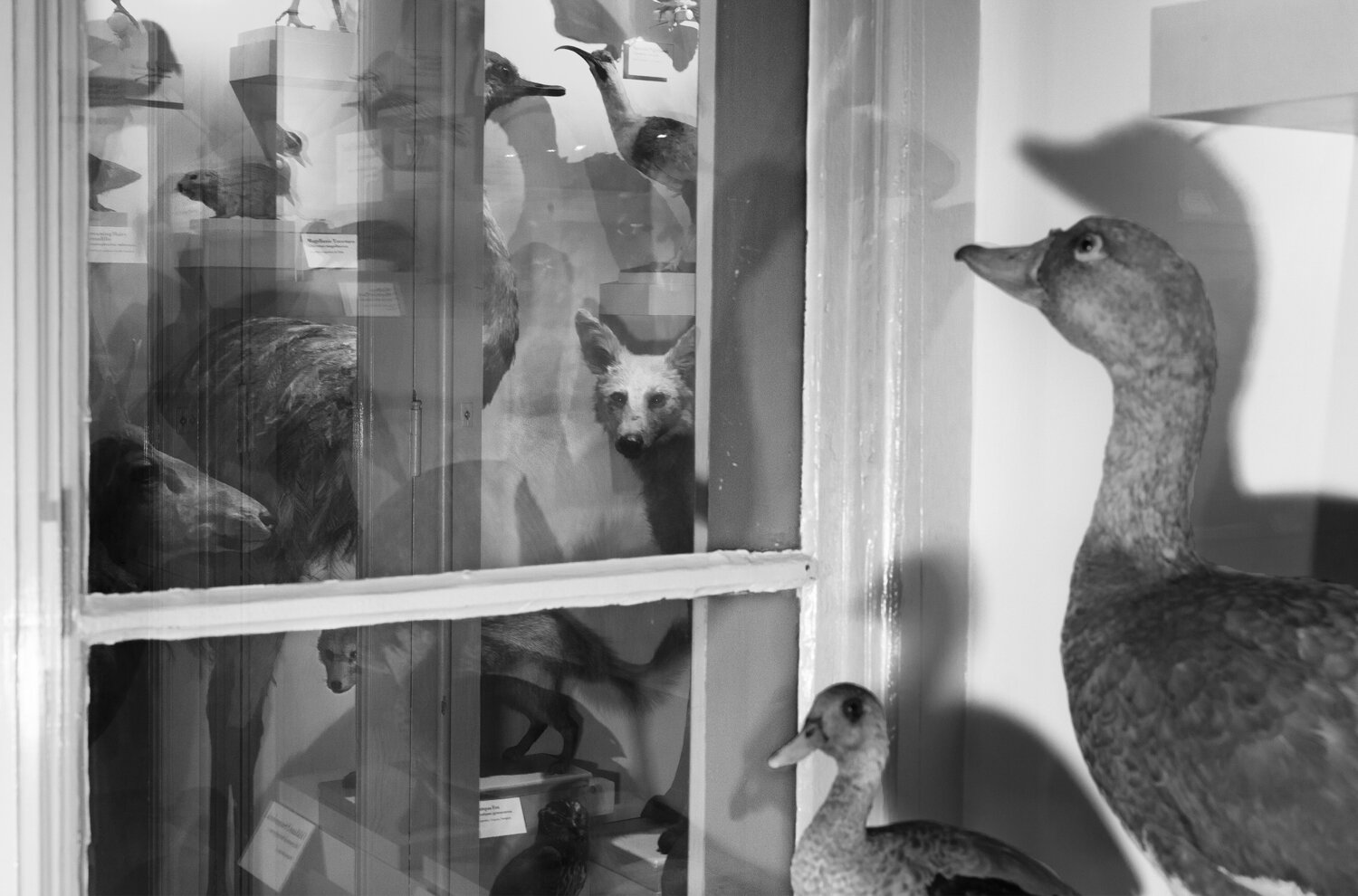
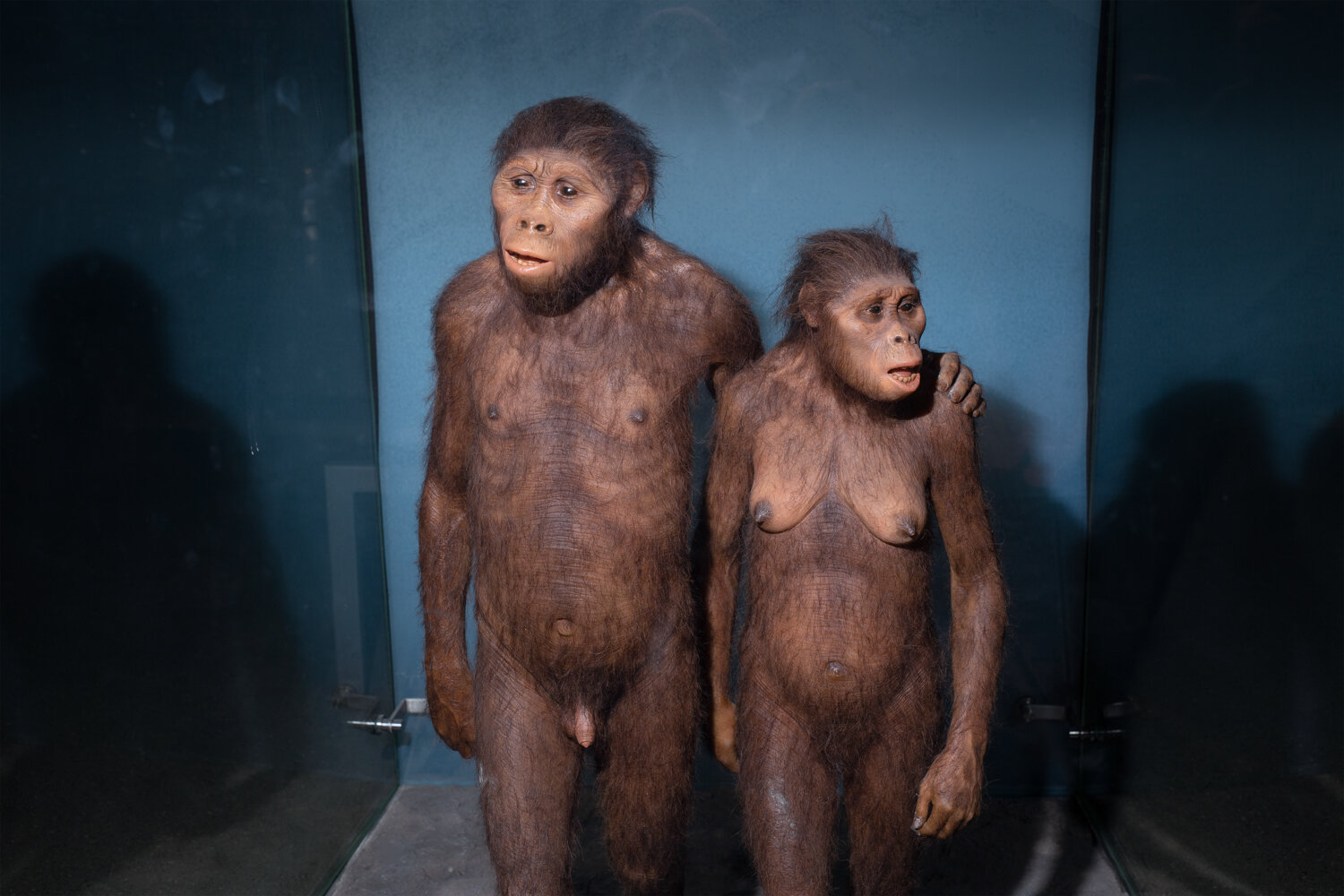
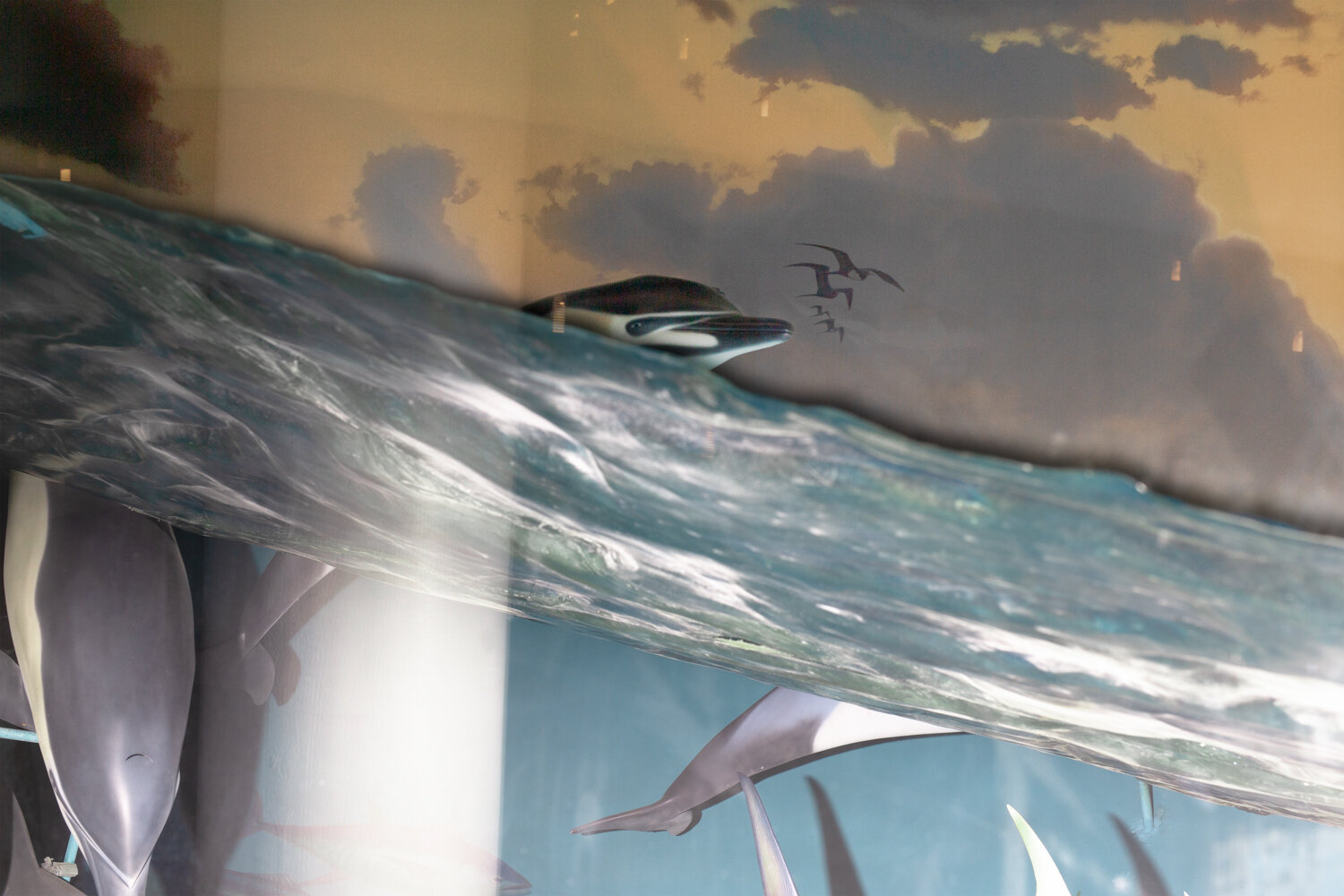
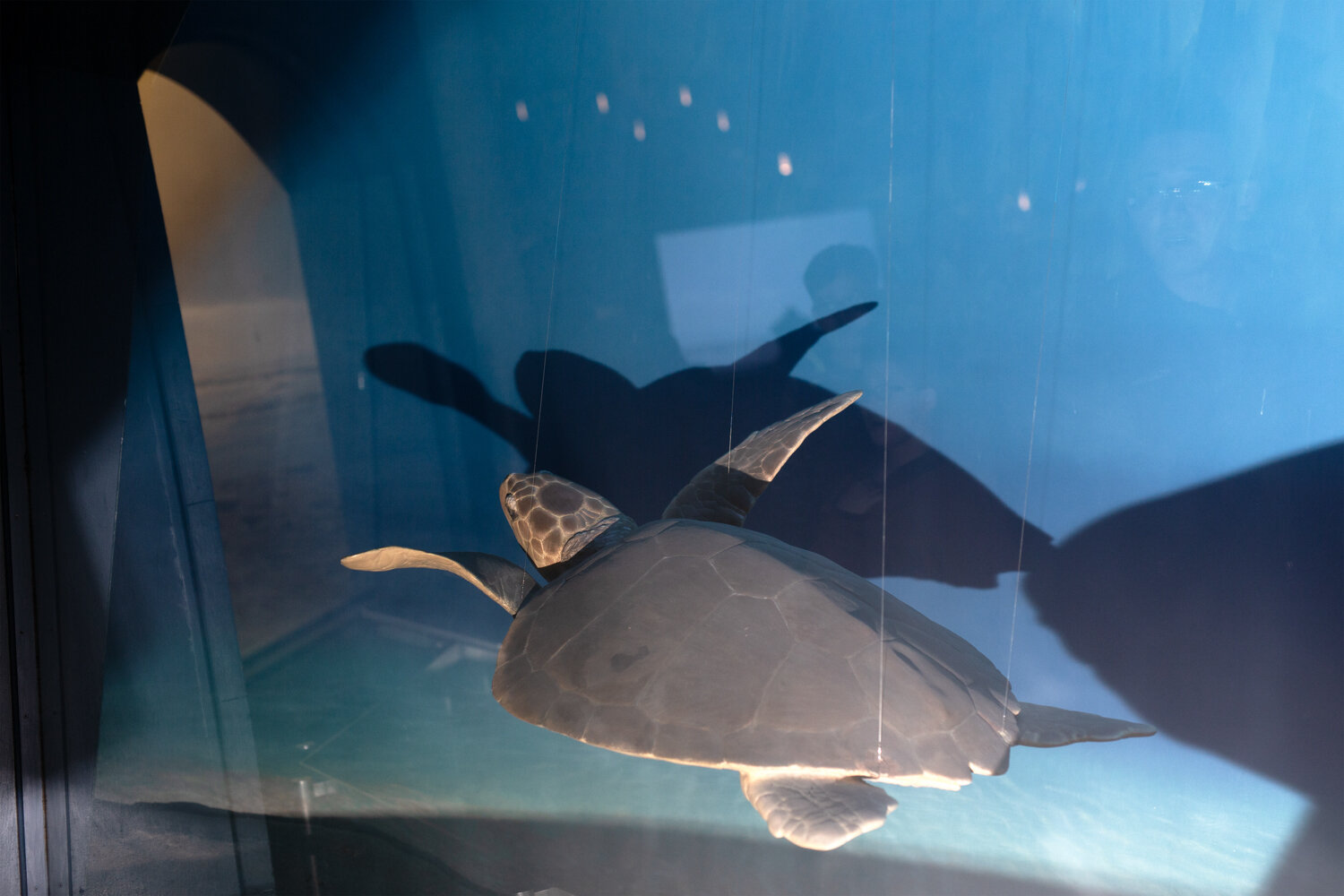
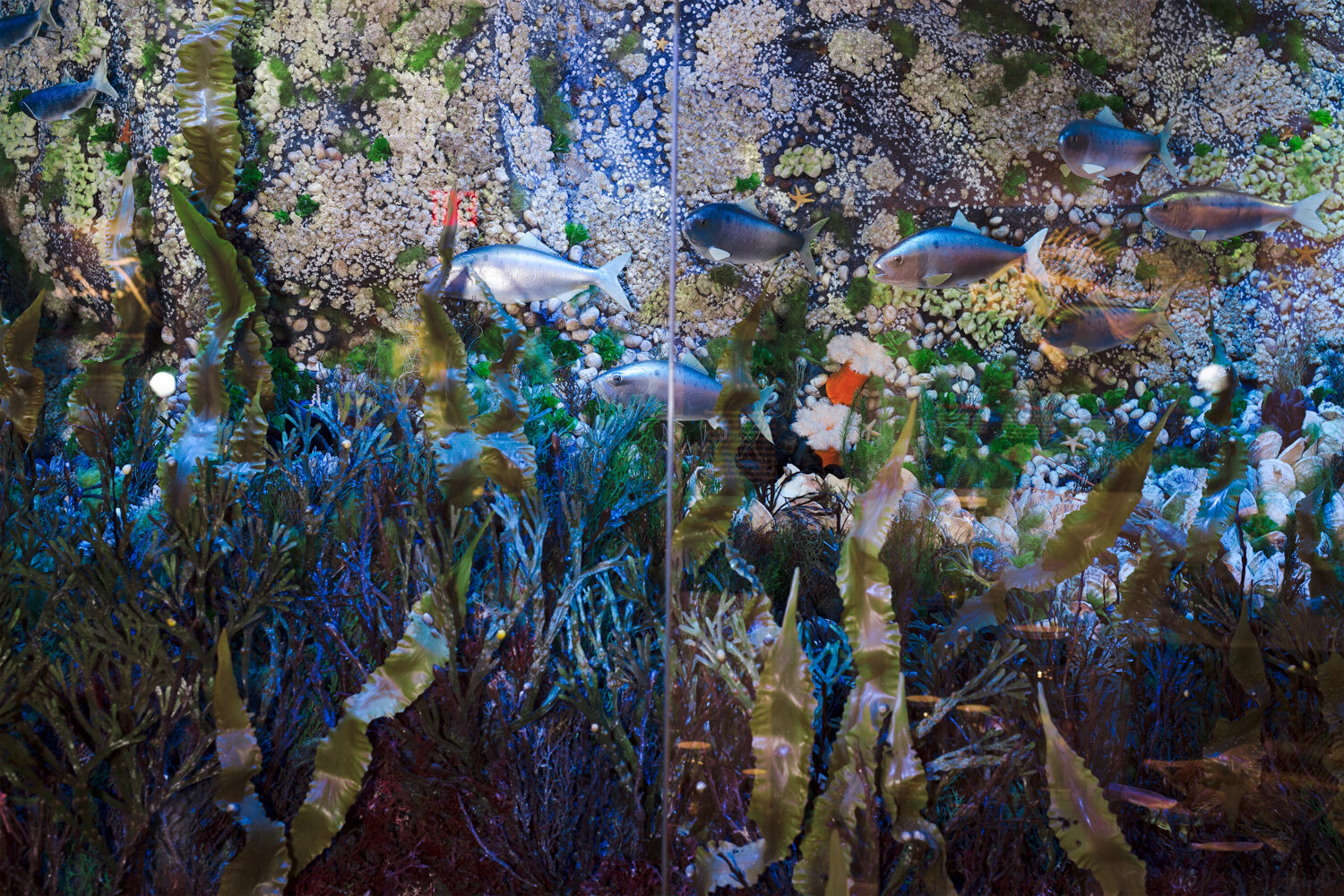
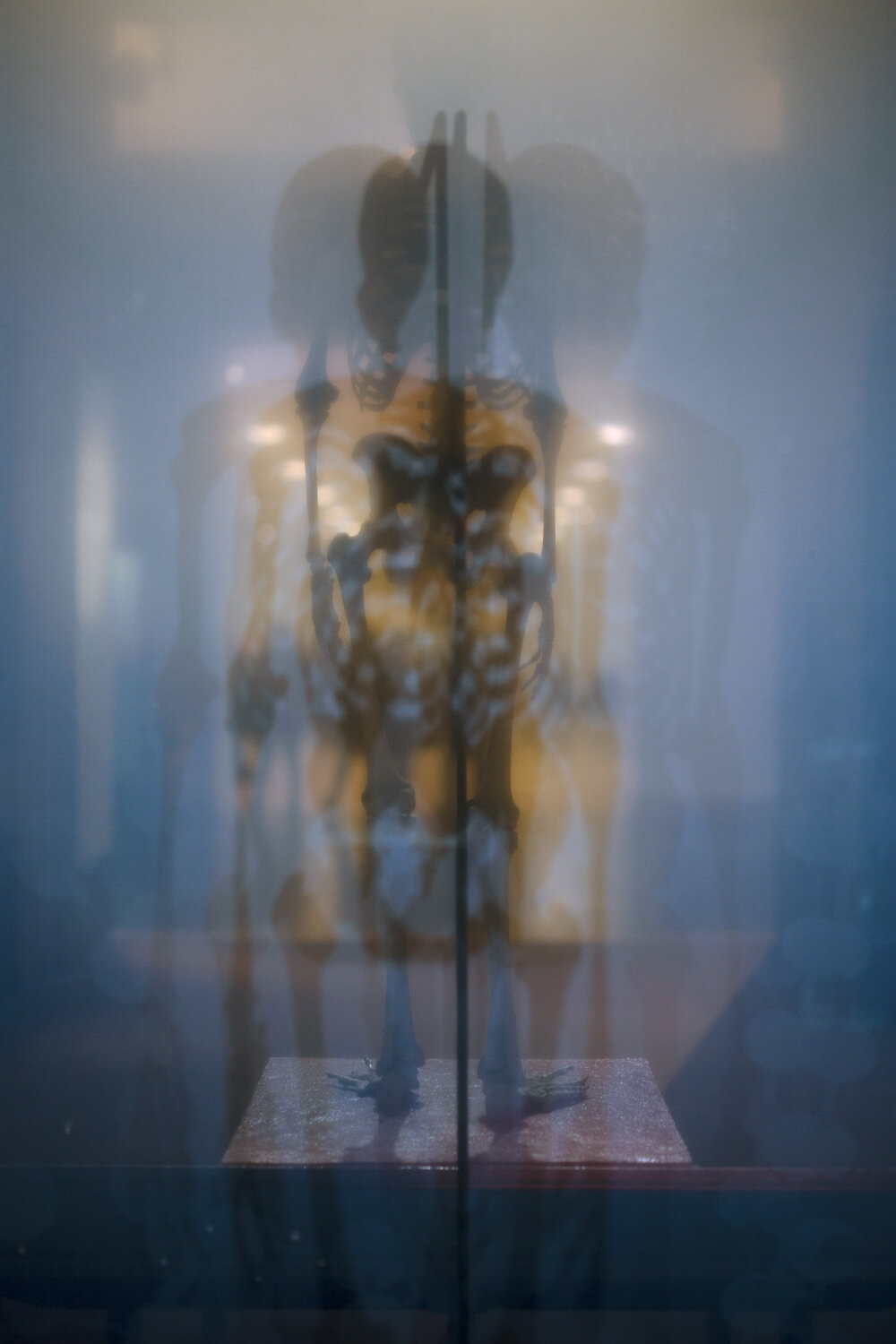
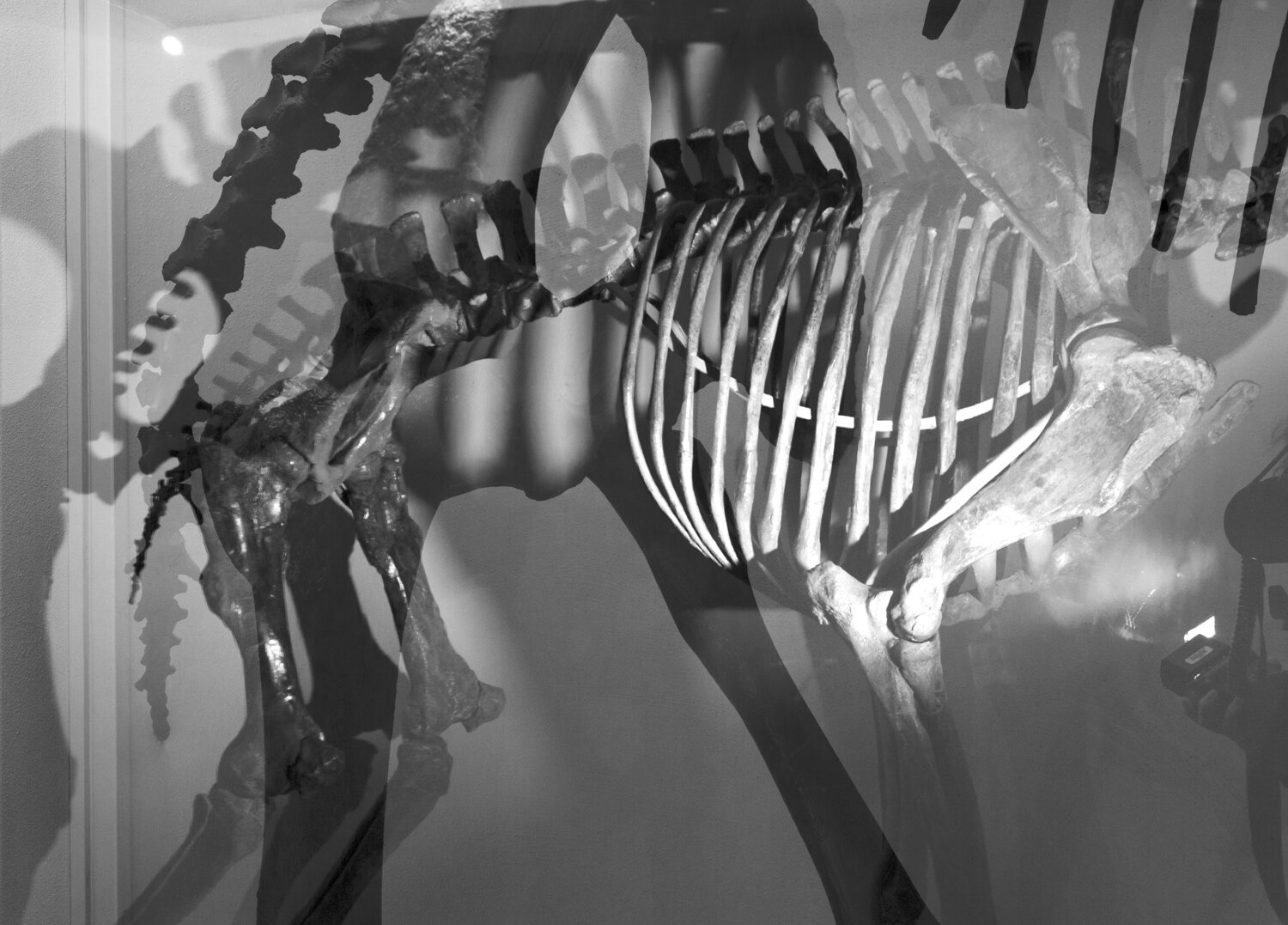
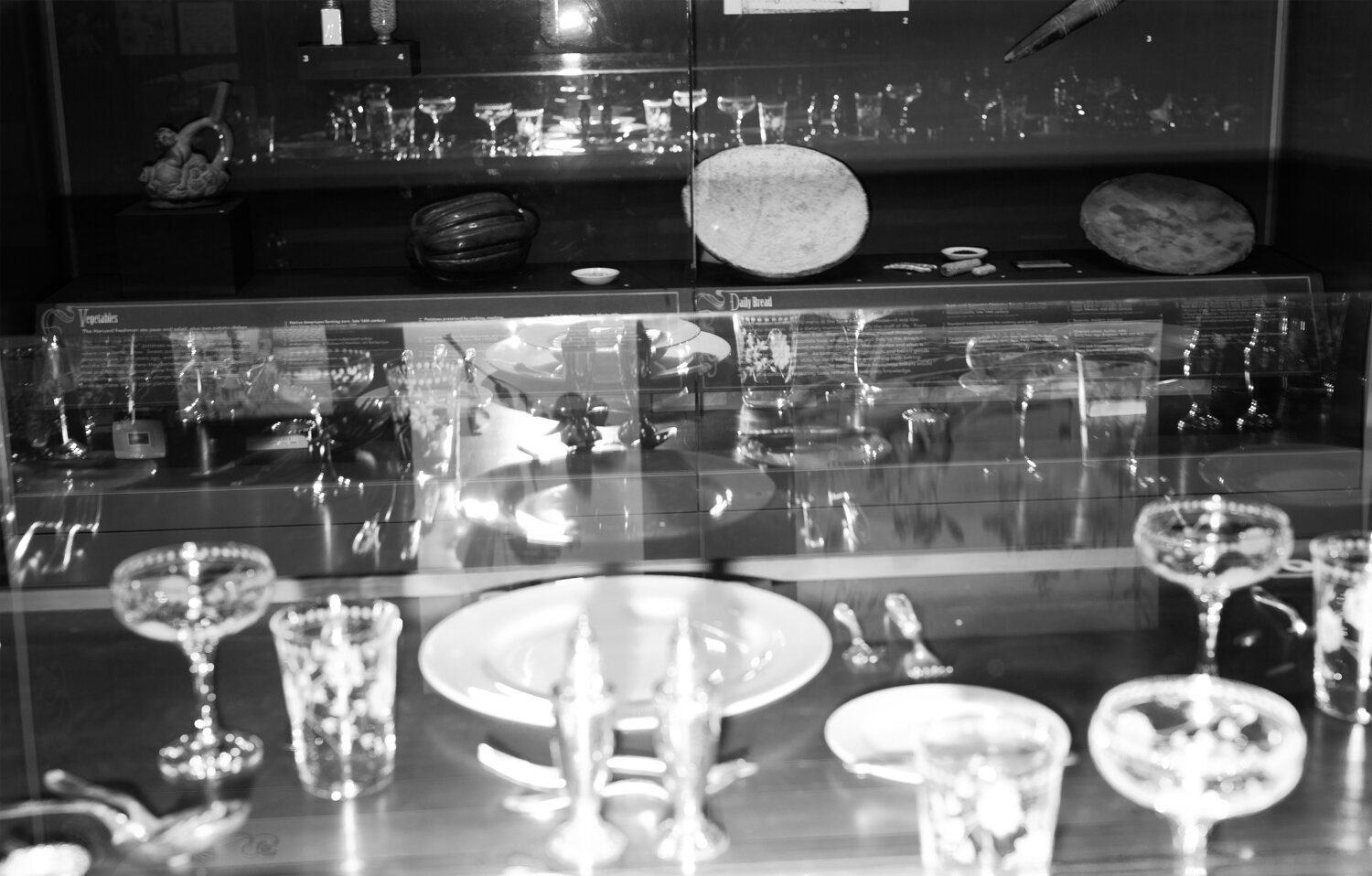
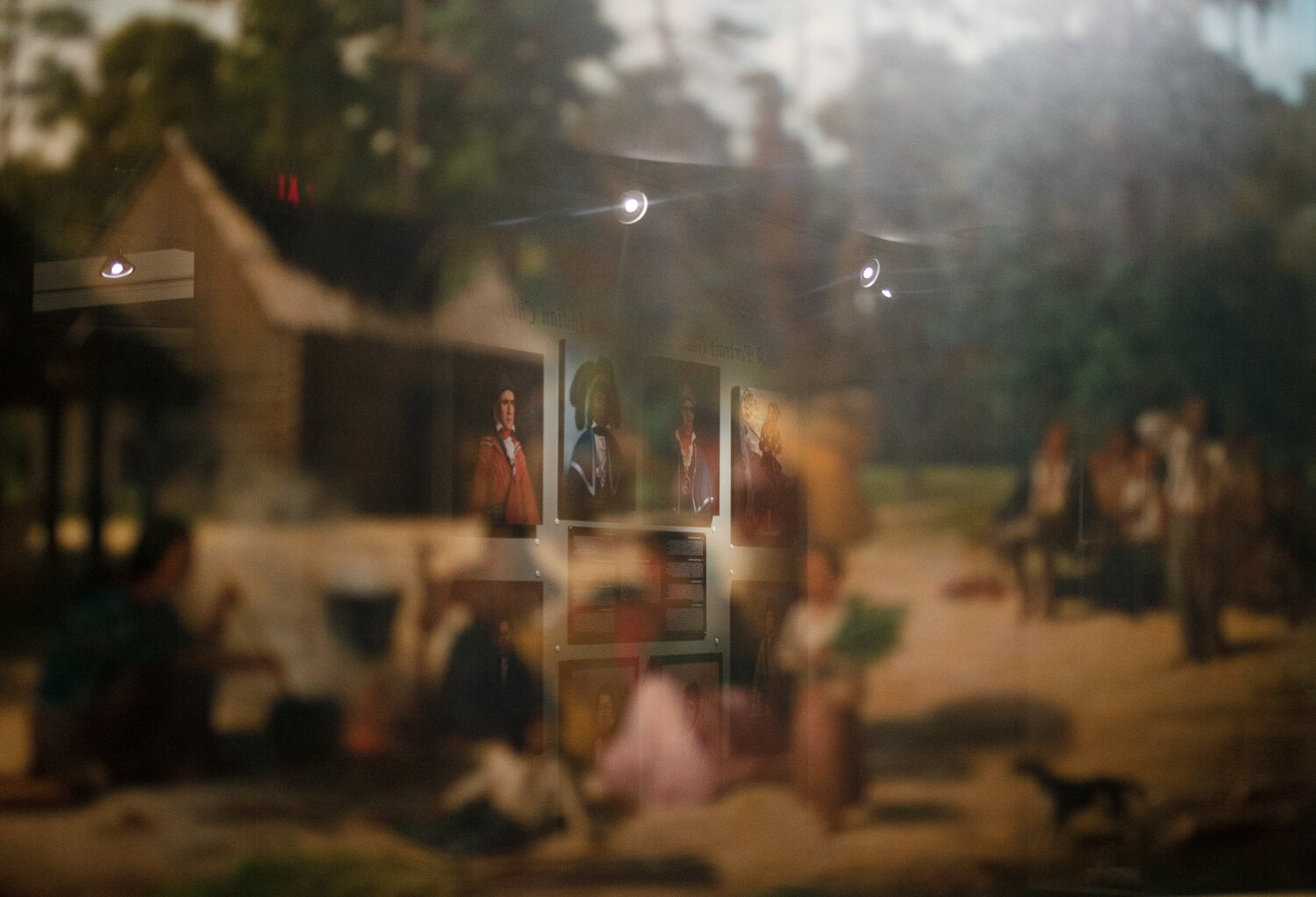
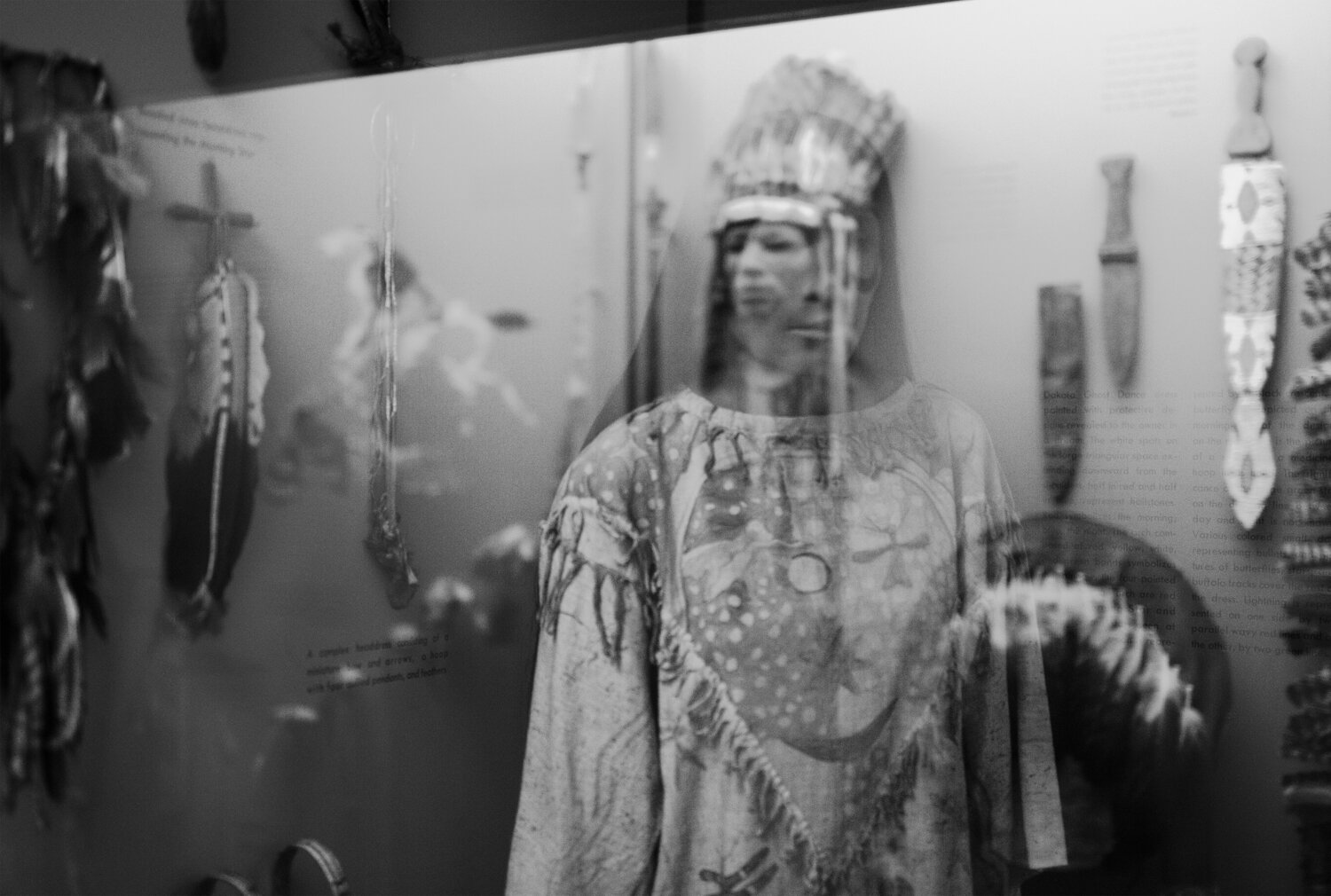
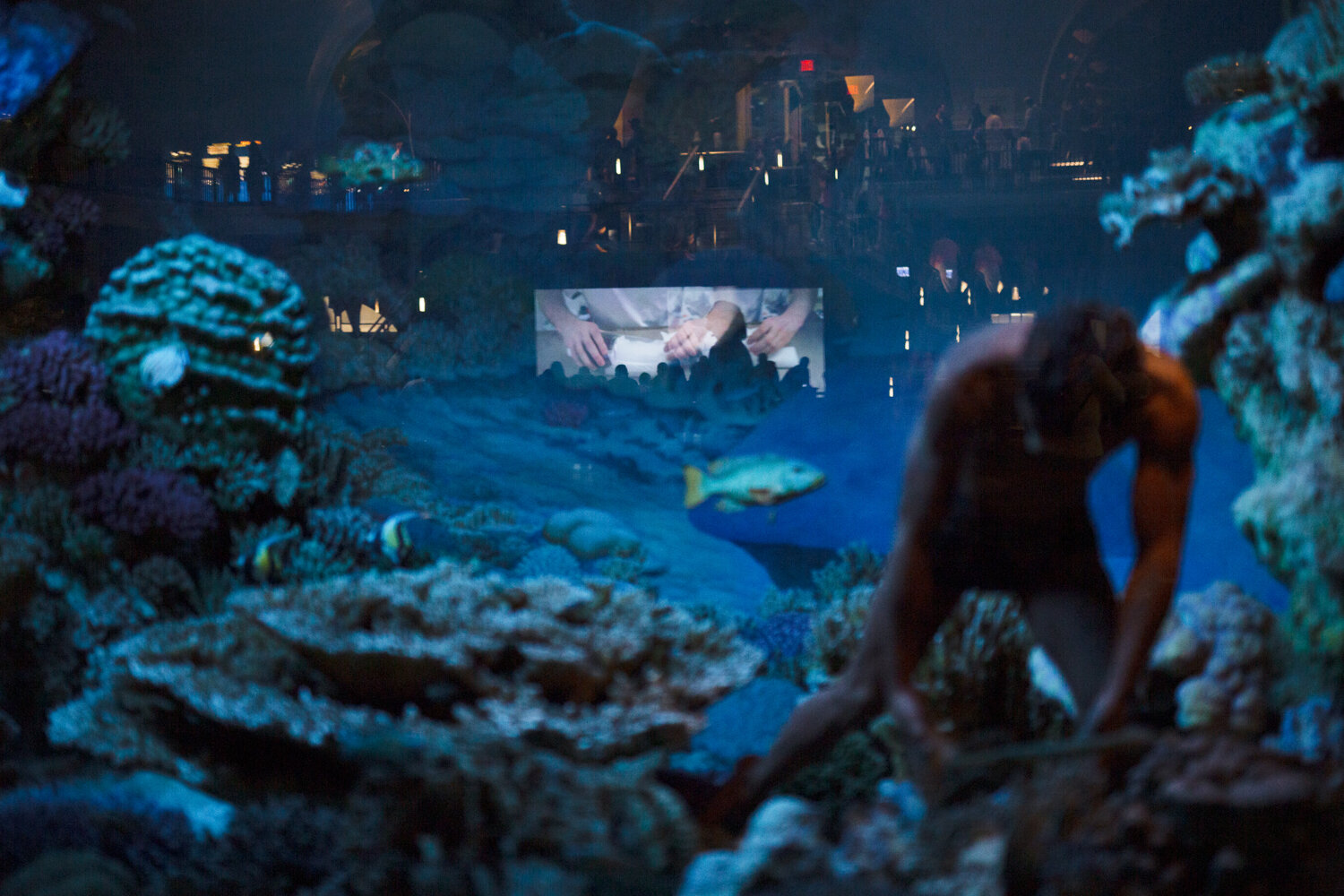
48 South Street
Jamaica Plain, MA 02130
“While photographing for this project at the American Museum of Natural History, I felt an awe that I’ve felt since visiting the museum as a kid. The dioramas seem as though you could fall into them, and the animal specimens seem alive – in one image, one primate puts an arm around another and the gesture is tender, if implausible.
While some of these images play off the personified drama generated in dioramas and display cases, others respond to the ambiguity of what we are able to learn there. In omitting all text elements of the displays, I hope to make apparent viewers’ desires for and expectations of information from the museum, as well as the limitations of that information. The museum, like photography, is conventionally understood to bring objective truth to its viewers. The museum, like photography, presents a visual reality that is at once exactly described and woefully untrue.
The production of knowledge in the museum is shaped by the desires of those who control it. Both museums and photographs have a history of being used to express power and dominion. I included photographs of exhibits about Native Americans because I feel that they speak to the museum’s warping of Native histories. At the same time, I worry that I am furthering the harm done by the museum by excluding any contextual information about the objects in these exhibits. For me, these photographs motivate exploration of my subject position, both as a white American implicated in the continued abuse of Native populations, and as someone who wields a camera and must face the complex and violent legacy of photography.
Ultimately, the aim of the museum, and of my photographs, is larger than telling the truth – both are spaces to hold questions, exploration, and reflection”.
Mika Simoncelli is a sophomore at Harvard University majoring in Art, Film and Visual Studies. Mika grew up in New York City and studied film photography at the International Center of Photography. In quarantine, Mika is pondering the possibilities and limitations of photography in expressing connection, touch, and embodiment.
You can see more of Mika’s work on their site: mika-simoncelli.format.com
“While photographing for this project at the American Museum of Natural History, I felt an awe that I’ve felt since visiting the museum as a kid. The dioramas seem as though you could fall into them, and the animal specimens seem alive – in one image, one primate puts an arm around another and the gesture is tender, if implausible.
While some of these images play off the personified drama generated in dioramas and display cases, others respond to the ambiguity of what we are able to learn there. In omitting all text elements of the displays, I hope to make apparent viewers’ desires for and expectations of information from the museum, as well as the limitations of that information. The museum, like photography, is conventionally understood to bring objective truth to its viewers. The museum, like photography, presents a visual reality that is at once exactly described and woefully untrue.
The production of knowledge in the museum is shaped by the desires of those who control it. Both museums and photographs have a history of being used to express power and dominion. I included photographs of exhibits about Native Americans because I feel that they speak to the museum’s warping of Native histories. At the same time, I worry that I am furthering the harm done by the museum by excluding any contextual information about the objects in these exhibits. For me, these photographs motivate exploration of my subject position, both as a white American implicated in the continued abuse of Native populations, and as someone who wields a camera and must face the complex and violent legacy of photography.
Ultimately, the aim of the museum, and of my photographs, is larger than telling the truth – both are spaces to hold questions, exploration, and reflection”.
Mika Simoncelli is a sophomore at Harvard University majoring in Art, Film and Visual Studies. Mika grew up in New York City and studied film photography at the International Center of Photography. In quarantine, Mika is pondering the possibilities and limitations of photography in expressing connection, touch, and embodiment.
You can see more of Mika’s work on their site: mika-simoncelli.format.com